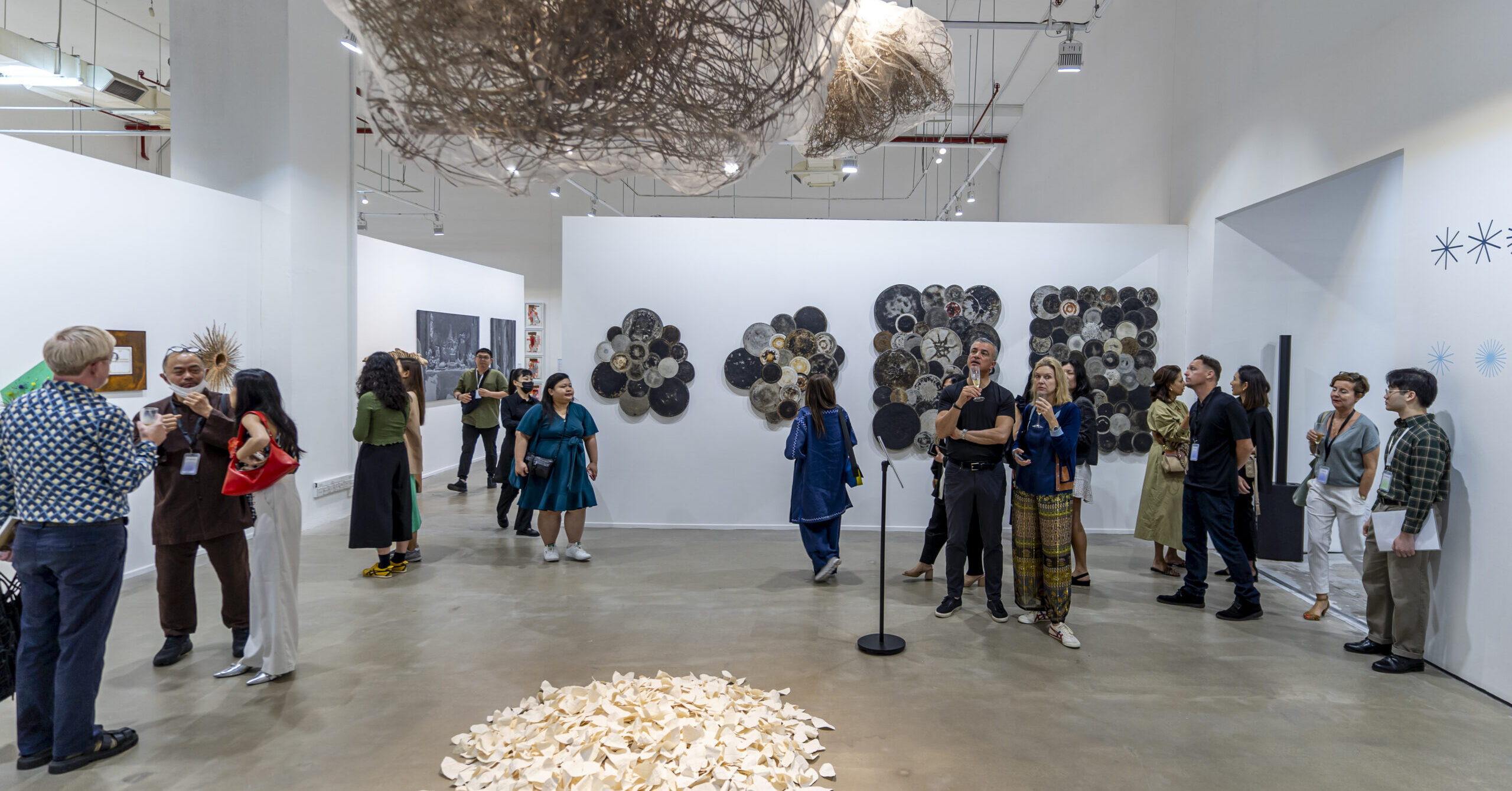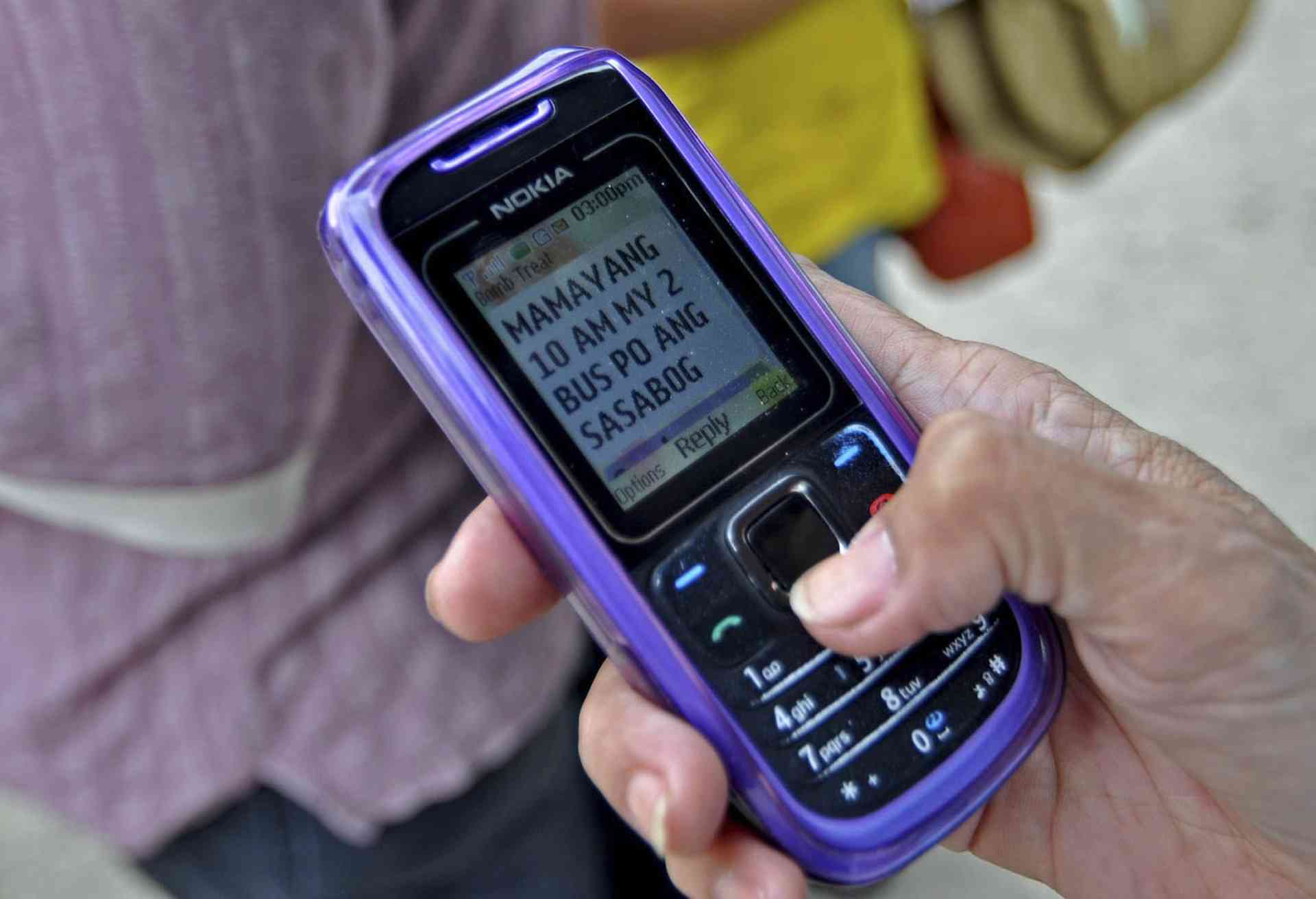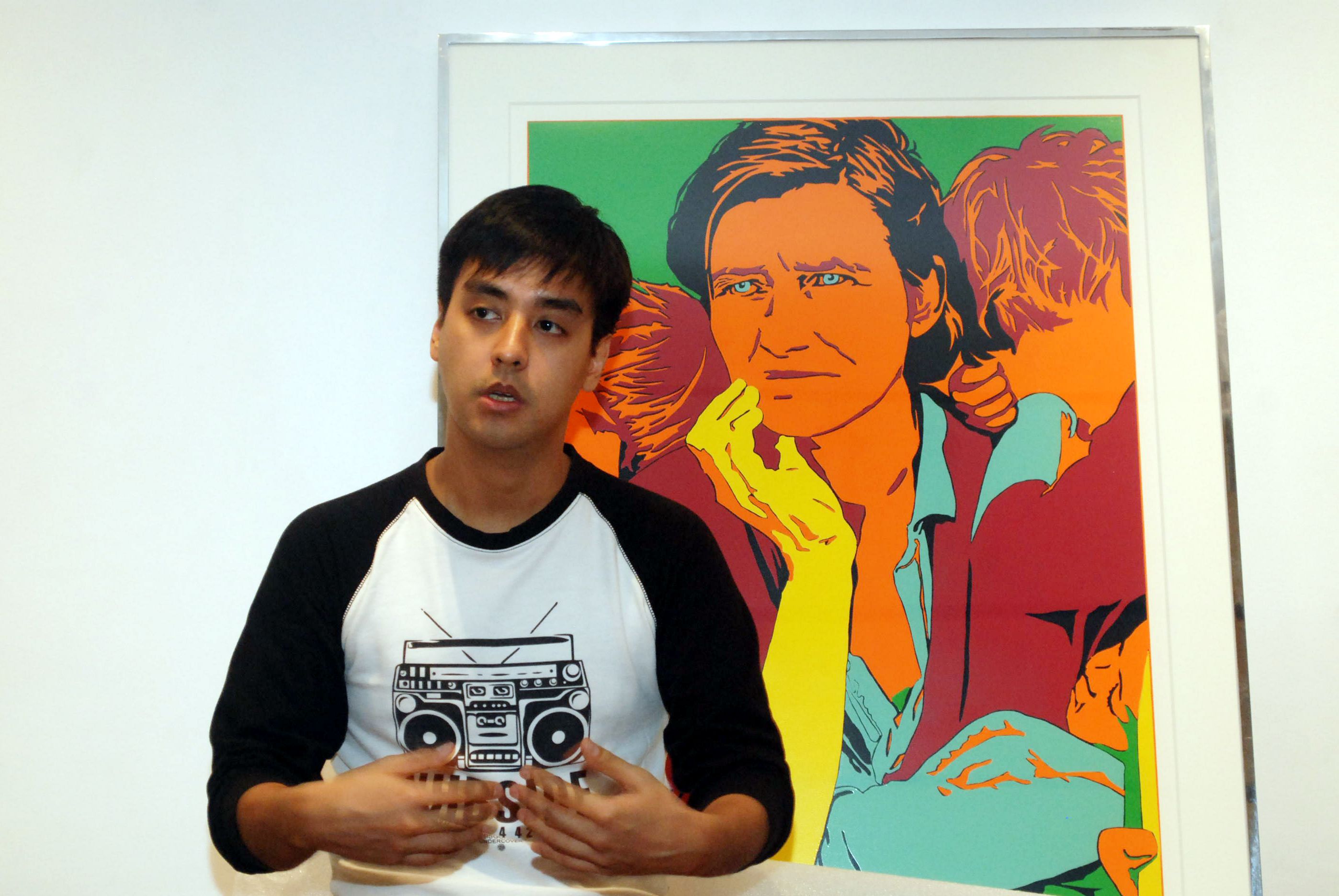He likes to capture the “beauty of struggle,” or so says Chicago-based Filipino-American artist Cesar Conde.
Some people may argue that the idea of “struggle” is relative, but Cesar Conde’s works leave little room for ambiguity. He is, after all, a realist, much in the style of French artists Honore Daumier and Gustave Courbet, who aimed to undress truth in all its naked, at times, unnerving glory.
His upcoming solo exhibit titled “Sagrada— Sinful/Saintful,” a series of “paintings reflecting the woes of morality and its hypocritical structure within the Catholic context,” are somber reminders of society’s neglect and need for genuine compassion beyond religion. The series urges viewers to look, if not behold, images often excised from memory: a handless beggar, a gaunt little girl in tattered clothing, street kids in Mumbai, monks in Bali. Conde’s canvases are huge and commanding. His subjects, stark against a slick black background, are rendered in exquisite detail, much like his every living moment.
I know this because I have had coffee with him. And always the morning espresso would stretch into a saunter in blustery weather for a remarkable lunch at a neighborhood restaurant, then more caffeine and sugared treats at a local café, a lot of talking and laughing, and before you know it, it is almost time for dinner. The next day, Conde would be in Costa Rica or Buenos Aires, posting Facebook status updates between layovers. Or he would be in a stage play portraying an offbeat character, not unlike his fun, irreverent self. Indeed, the seriousness of the themes he tackles in his art belies the comic in this provocateur.
Those who know Conde beyond cyber friendships will agree that he has an affability about him that allows him to traverse along race and class lines—hobnobbing with the rich, white, and famous one moment, and the next, walking through the slums of Manila, mingling with the dark-skinned destitute.
One of his paintings, that of a poor girl squatting on the ground, staring out from a corner of the 6 x 12 canvas into desolate darkness, now looks across Big Ben in a multi-million Euro home in London.
Conde remembers it was just before dawn when he saw the child in front of her dilapidated, makeshift porch, marveling at the rising sun: “She sat still, watching the sun paint their cardboard box of a home with crimson reds and golden yellows… Even in poverty, the time to appreciate a new day is priceless… This girl, probably 10 by now, walks barefoot, while her painting is admired by the well-heeled crowd. In the meantime, the sun continues to rise and set in her ghetto.”
Conde claims he is inspired by “socially relevant issues.” “Beggars, the homeless, people deemed as undesirable. In struggle one finds humanity, finds qualities of survival… I get inspiration from the people. I want my work to be able to spark action towards social change; I don’t do decorative works.”
However naïve and idealistic this may sound, Conde’s paintings have undoubtedly stirred people’s imagination, if not awoken some dormant sense of justice. A series he began last year in response to the shooting of an unarmed African-American teenager in Florida named Trayvon Martin drew attention towards the reality of racial profiling in America. That, and the increasing incidence of gun violence in Chicago, his base city, prompted him to embark on “In the Hood: Portraits of African-American Professionals in Hoodies.” Composed of large imposing canvases featuring stunning photographic faces in black and white, the paintings have become his statement against the continuing prejudice against people of color.
“I felt helpless, frustrated, angry and devastated that this type of violence and racism still happens and it costs lives. There’s no reason for ignorance or intolerance anymore,” he says. In the beginning, he invited a few of his good friends to pose for his project. “I don’t call them subjects, I call them collaborators—they also wanted to do something. When I asked them to model, they felt empowered. This is one way they can contribute to the struggle.”
Soon, word got around, and doctors, lawyers, educators, politicians, including a senator of color (Senator Kwame Raoul) contacted him to become “collaborators.” They posed, sporting a hooded black sweater that many young people—black and otherwise—are fond of wearing in the US. “When we wear hoodies as people of color, we become suspect. When we wear it, we become invisible.” He used an anecdote to illustrate his point.
One of the collaborators was an African-American captain from the airline where he works. “The crew went to see what I was doing during layovers. They saw one of the drawings of a black man in a hoodie. They said, ‘He looks like a thug, a gangbanger.’ And that was when I said, ‘That thug is your boss.”’
In fact, Conde’s profound understanding of “color politics” is rooted in his experience as a Filipino immigrant. He came to the US in the early ’70s when he was 9. Before this, he remembers living in Caloocan City where he went to school and made fun of “Negritos,” like all the other kids.
His father was an engineer and so he laughs uneasily when he says, “We are part of the brain drain of white-collared workers.” He was placed in 7th grade at a predominantly white school. “I felt very alienated. My English wasn’t that great. I was timid. Teachers loved me because I was very respectful—back home you are taught to never talk back. There were very few kids of color. I had a middle school friend who was African-American.”
Conde wanted to fit in, but he got bullied on a daily basis, and one day while walking to school, the white students beat him up badly. “I told my white gym teacher but he brushed it off thinking it was just kids being kids,” he recalls. “But when I told my African-American teacher, she was more sensitive. She reprimanded the kid who hit me and moved me to another class.”
It was another African-American educator who tried to open his eyes to the issue, a principal who sent him to camp. “Selected kids of color went to a special camp workshop which dealt with racism. We learned about stereotypes, generalizations, name-calling—how to deal with them, but I didn’t feel that it concerned me.”
Then, he remembers hearing teachers say, “There goes the school,” when it started bussing kids from the south side of the city, a predominantly black area, to the north side, which had more white students. In fact, in 1978, Seattle Public Schools was the first large urban district in the United States to undertake a desegregation plan without a court order to do so (Seattle Times).
Still, Conde made little connection between the terribly maligned “Negritos” in his homeland and his own diminished status in his new adoptive home.
“On the first Halloween of integration—the football team wore KKK outfits.” KKK stands for Ku Klux Klan, the white supremacist group that promotes slavery and advances the belief that the white race is superior to other races, often through violent and brutal means.
“They were suspended from school but not until after the African-American kids made an issue about it. That was when I felt really disturbed. I didn’t know about the KKK. I only found out about it through the black kids.”
Similarly, though his works cross cultural boundaries, Conde remains proud and conscious of his Filipino identity at all times: “My cultural identity gives me strength and power of owning my space in the world in this difficult western art world that under-represents people of color and women, and is very white male-oriented.”
“In the Hood” is his contribution to the ongoing dialogue about race and color. This is true even in Manila, where the issue of race superiority is constantly, if unconsciously, stoked through the booming sales of whitening lotion, the showbiz popularity of mestizo faces, the movie “Cofradia,” the young dark-skinned woman whose wish to become fair was granted but only if she lit a magical white candle, and, yes, the proliferation of crooks of color on primetime TV.
Conde’s “In the Hood” series is about perception and reality.
Recalls the artist: “(It was) my own perception growing up in the Philippines, watching shows like ‘Streets of San Francisco,’ where all the antagonists were Hispanic or African Americans and the protagonists were white males… (W)hen I went to the US, my friends were of mixed races, and none of them were gang members or gardeners or criminals and so I had to question the perception I had been given by media. I still fault Hollywood for exporting these types of subliminal messages about people of color in the United States.”
Art critic Jake Bittle from South Side Weekly described the series as “stunning.” “These paintings, with all their directness and their immensity, force their viewers to take a step—a large step—back from all of their ingrained preconceptions about race and behavior. They are, in a word, arresting.”
African-Americans who saw the paintings at Chicago’s hip art gallery, Zhou B Center, had positive things to say. “The biggest compliment was when a group of black elders—board member of a tenants’ rights organization—happened upon my studio and looked at the work. I was about to explain my work when they stopped me. They said they know what it’s about—Trayvon Martin—and how the hoodie had become a symbol of inequality in US. I didn’t have to explain it… They gave me a big hug. You’re doing it for us. Keep on doing it.”
A group of students from Malcolm X College, a predominantly African-American institution, came on a field trip to view the exhibit and were awestruck. At the talk-back, Conde shared his rationale for doing the series, and the students agreed, recalling their own experiences of prejudice outside their neighborhoods.
In his review, Jake Bittle described his experience in viewing the exhibit: “Each (painting) confronts its viewer with a face both stark and compassionate. In concert, however, the series seemed to say more than the sum of its parts. The faces work not as a group of individuals, but as a community speaking out against our entrenched judgments and preconceptions.”
“We are all neighbors,” Conde says. “We need each other to survive. No matter where we live, this is our hood. My work challenges the notion of ‘the hood’ as just ‘inner city.’”
Conde, who began 25 years ago as a self-taught artist, knows only too well the concept of a global neighborhood. The artist is a seasoned traveler, as evidenced by his location tags on Facebook. One day in Seville, sharing good food and toasting Prosecco with newly minted friends. On another, in a remote village in France studying a painting style called technique mixte with a master. Recently, he was in Brazil, reporting “futbol chaos in Sao Paulo!”
It was in Florence, Italy, where Conde refined his artistry—at the Angel Art Academy, known for its dedication to the classic realist painting style. Of course it helps that he has been working as a flight attendant for over 20 years now. After all, there is no such thing as a full-time artist of color in America, hardly any at least. Art materials are not cheap and artist grants are few and far between, not to mention very competitive. While he has sold some of his paintings, ranging from $500 for a small charcoal study to $10,000 for his huge, life-sized mixed media canvases, what he earns barely covers his expenses for art supplies; hence, his need to work as a “waiter in the sky,” as he dubs his seemingly glamorous yet obviously blue-collared job.
As an airline worker, Conde has actively fought against anti-union policies that cut workers’ pay and benefits. He has also stood up against the mammoth airline mergers that left workers out in the wings, with many laid-off or without health benefits and/or pension.
Indeed, Conde is not one to stand by passively in the face of injustice. He either protests it or paints it. •
Postscript: “In The Hood: Portraits of African American Professionals Wearing a Hoodie” has traveled to Florida at Art Basel, and will be in ArtPrize in Grand Rapids, Michigan from Sept. 24-Oct. 12, 2014, as part of the entry for an international competition. Likewise, his series titled “Sagrada—Saints and Sinners” has recently opened at FM Gallery in Chicago, Illinois.












































